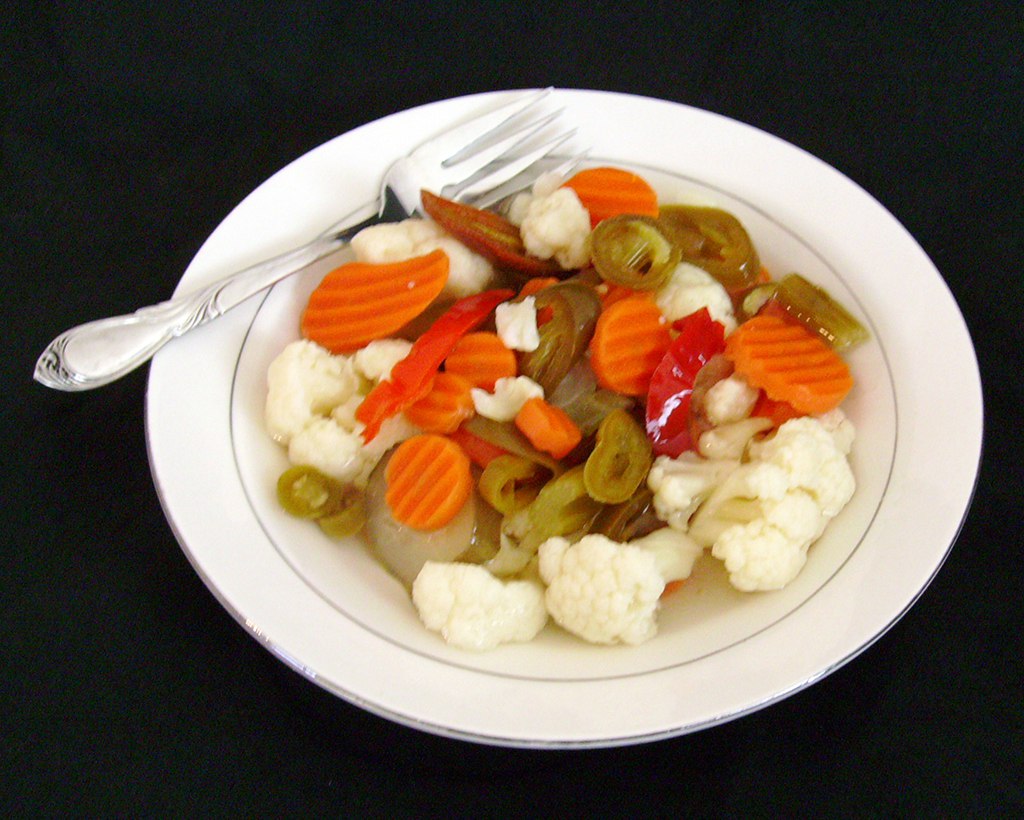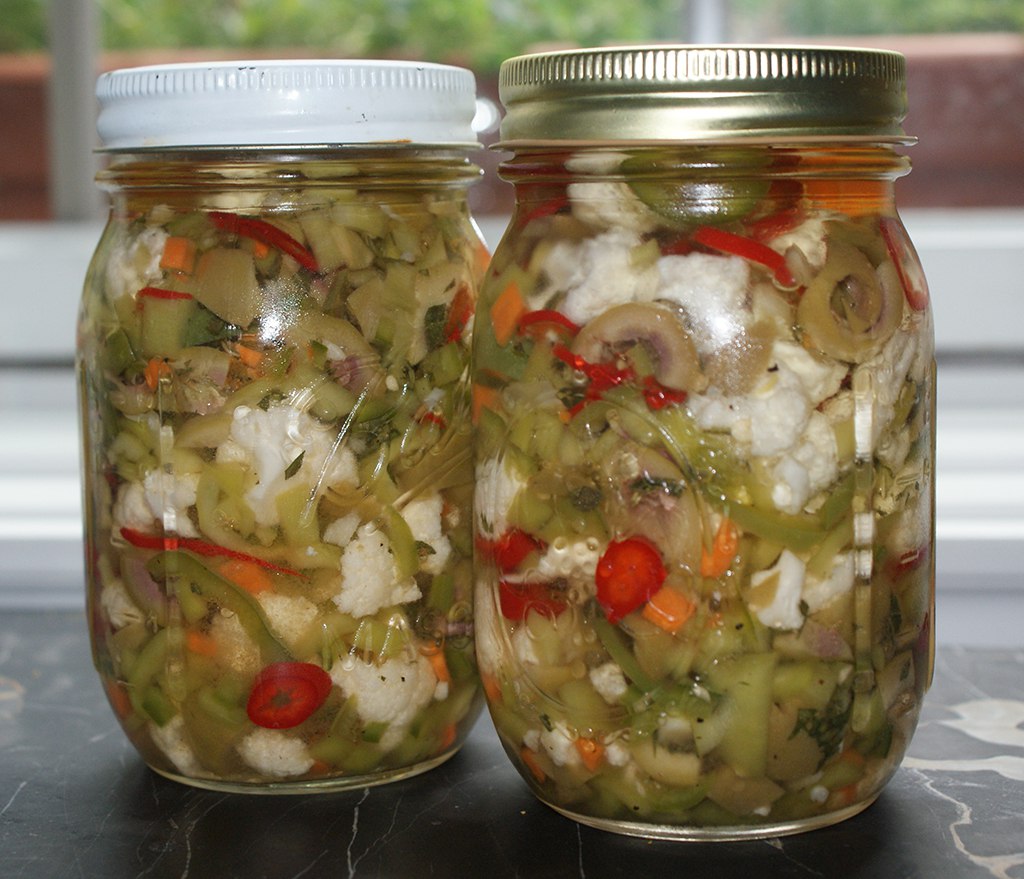Most of us have come across it in the course of our culinary adventures. We’ve found it tucked into the muffaletta sandwich we ate in New Orleans or scattered across the green salad served before the wild mushroom ravioli, making us wonder if it’s Italian, French, or a product of Madison Avenue. Whatever it is, that sometimes-sweet, sometimes hot mélange of vegetables has never quite received the attention it deserves, so it’s time to shine the spotlight on this unsung hero of the condiment clan, Giardiniera.

First things first: Giardiniera has its roots in Italy and pronounced jar-dih-nair-ah, not zhar-dih-nair-ah. If you’ve heard it pronounced without the final syllable, that’s just a Chicago-ism that’s gone viral because Chicago, as we’ve learned, is Giardinera’s American home town.
Giardiniera is a mixture of vegetables that have been pickled in salt brine or vinegar. Though you will sometimes find commercial Giardiniera packed in brine, the traditional Italian version calls for the vegetables to be packed in olive oil or a combination of olive oil and vegetable oil. Typical vegetables used include carrots, cauliflower, celery, green beans, olives, onions, and peppers, along with flavorings like mustard seeds, garlic, oregano, and red pepper flakes. Giardiniera comes in both mild and hot varieties, depending on what kind of peppers are used, and some hot types may even have a dash of hot sauce added to the oil. The most familiar form is for the vegetables to be cut into one- or two-bite chunks, but there’s also Giardiniera relish, in which the vegetables are minced to make an easy sandwich spread.

Photo Credit: From Belly to Bacon
Pickling is one of mankind’s oldest techniques for preserving foods, dating all the way back to ancient Egypt. In warm latitudes, without modern refrigeration or sugar for canning, an even broader variety of foods were pickled than are today, including fish, shellfish, meat, eggs, fruits, nuts, and, of course, vegetables.
Giardiniera, which means “from the garden,” is no doubt centuries old, a perfect solution for the abundance of kitchen vegetables grown in Italy’s sunny Mediterranean climate. Peppers would not have been in the original mix – they did not come along until the discovery of the new world, but everything else required – vegetables, vinegar, sea salt and olive oil were found in even the humblest of kitchens.
Giardiniera was not only valued as a versatile condiment that could add flavor to a wide variety of foods, but as a way of making the most of a garden – many Italian Americans remember their Italian-born grandparents’ tradition of making Giardiniera in the fall from the last harvesting of the garden.
Chicago, with its large Italian community, introduced many Americans to the condiment. Italian delis and restaurants served it with various dishes, added it to sandwiches, pizza, and salads and even offered it on traditionally American foods like hamburgers and hot dogs. Chicago’s wildly popular Italian beef sandwich, served throughout the U.S., is probably responsible for making more people Giardiniera fans than any other dish.

There are several ways to make Giardiniera. Step one is to select your vegetable mix. Firm vegetables like carrots, cauliflower, asparagus, and broccoli work well, just remember to cut tougher vegetables into thinner slices and smaller pieces than softer vegetables like eggplant and mushrooms.
The traditional Italian method for making Giardiniera calls for marinating raw vegetables in vinegar spices, then stopping the process when the vegetables have reached the flavor level and tenderness you like. The vegetables are then drained, transferred to a clean jar, and the jar is filled with olive oil (or a combination of olive oil and a neutral oil like canola) and left at room temperature. We have also seen recipes that call for salt brining and storing them in the brine, for par-boiling the vegetables first and storing in a mix of vinegar and oil, and recipes for a very mild version with sugar added to offset the acidity of the vinegar.
If you love Giardiniera, you really should try making your own. Use a traditional vegetable mix or liven things up with additions like canned artichoke hearts, sun-dried tomatoes, jicama, and jalapeno peppers. Come up with different flavor themes and use your creations on sandwiches, wraps, pizza, with pasta, in an omelet or frittata, or on meat, poultry and seafood.
Featured Image Photo Credit: Fresh From Oregon
I’m a full-time writer and food enthusiast. I love writing about food’s role in history and culture, and have found that cooking and fooling around in the kitchen is a perfect break from my work.
Give me a blizzardy day when I can make bread and soup and watch the snow pile up and I’m happy.